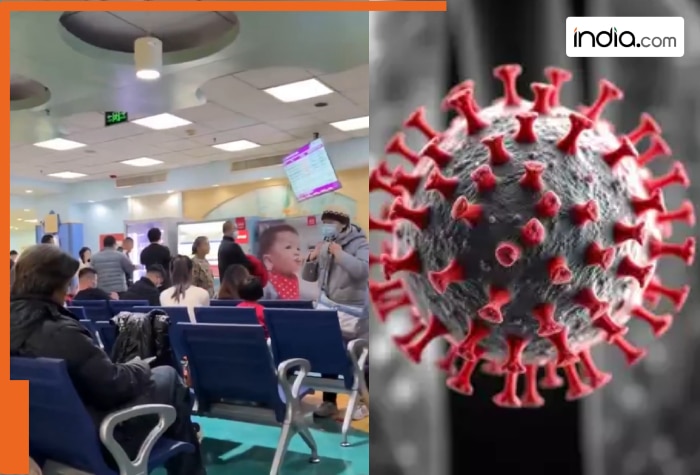Amid the HMPV outbreak in China, videos of crowded hospitals and children receiving intravenous drips have gone viral, not because of the Human Metapneumovirus.
Five years after the outbreak of the deadly Covid-19 pandemic that caused more than seven million deaths worldwide, China is experiencing a rise in human metapneumovirus or HMPV, a respiratory illness with flu-like symptoms. HMPV is a human metapneumovirus that has raised serious concerns about another health crisis after COVID-19.
Shocking images from China have gone viral and are allegedly linked to human metapneumovirus (HMPV). Videos circulating on social media show weak-looking children lying in hospital beds with intravenous drips, surrounded by anxious parents. Some photos also show crowded hospital wards, long lines of patients and medical staff in protective gear, prompting widespread concern. These images recall scenes from the Covid-19 pandemic, but the real situation appears to be different. The explanation lies in health practices in China.
China’s hospitals are overwhelmed by a severe “flu” outbreak, including influenza A and HMPV, similar to the 2020 COVID surge. pic.twitter.com/GWw9u6JxsX
— Boar News (@PhamDuyHien9) December 29, 2024
Studies reveal that many Chinese prefer to visit large hospitals and request intravenous drips even for minor illnesses. This differs from countries like India, where people usually visit local general practitioners first. During the harsh winter season, when infections are already widespread, this cultural approach leads to overcrowding in major hospitals, creating the impression of a health crisis.
To understand why people in China frequently visit large hospitals even for minor illnesses, a Chinese study published in the International Journal of Health Policy and Management provides insight. The study highlights that public health centers (PHCs), which serve as the first point of contact for medical services in most countries, are not functioning satisfactorily in China. Despite the Chinese government’s continued investment in primary healthcare facilities over the past decade, many patients continue to rely on large or tertiary hospitals for their healthcare needs.
Studies reveal that China’s health system is “severely fragmented”, with poor coordination between primary, secondary and tertiary care. The absence of family doctors as “gatekeepers” weakens primary care services, preventing them from competing with larger hospitals. As a result, patients often bypass primary care centers and directly visit tertiary hospitals, leading to overcrowding in these important health centers.
